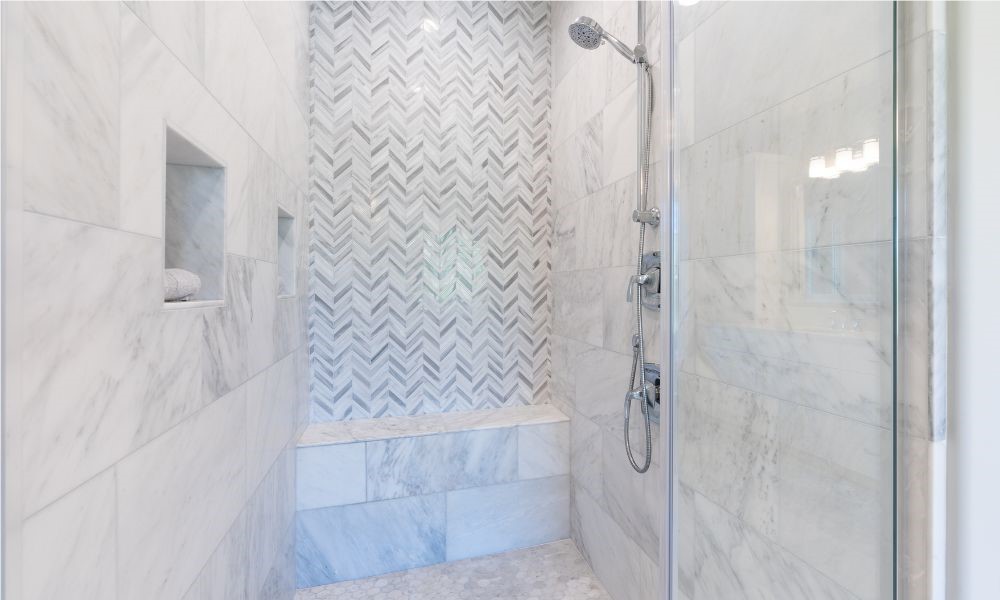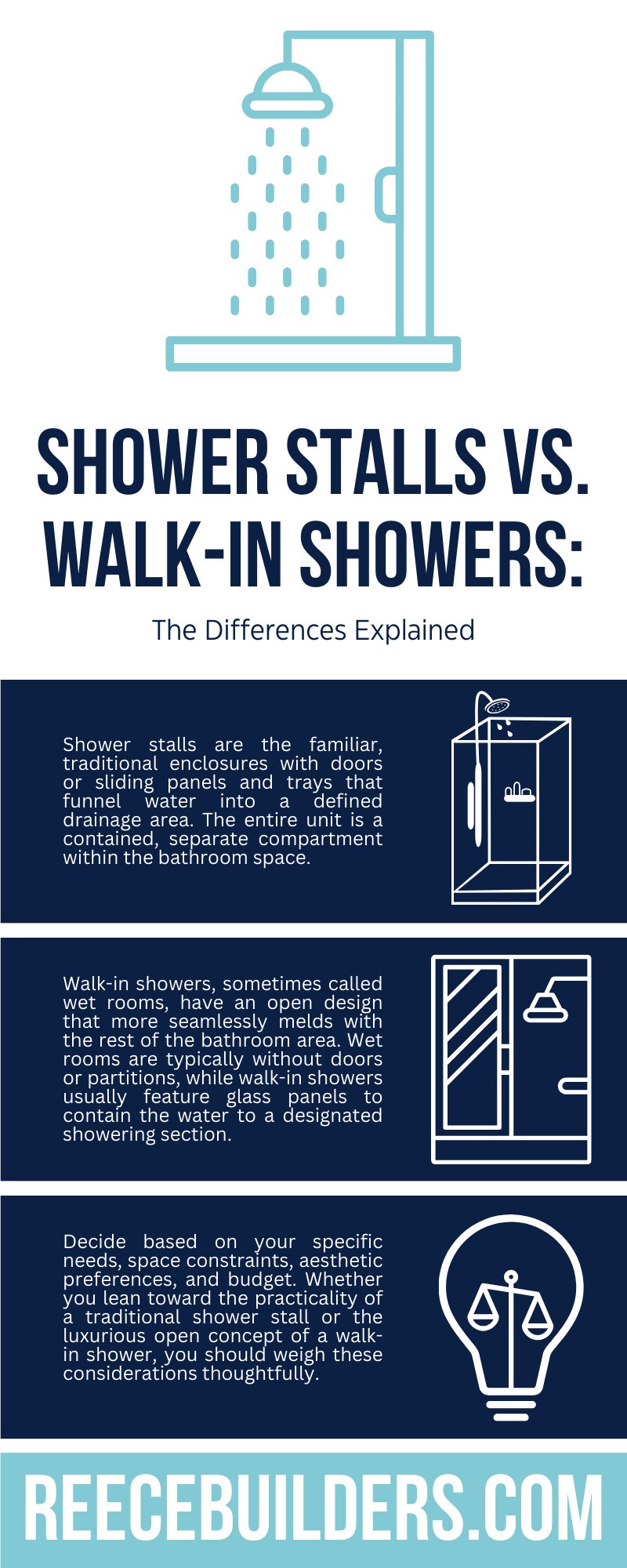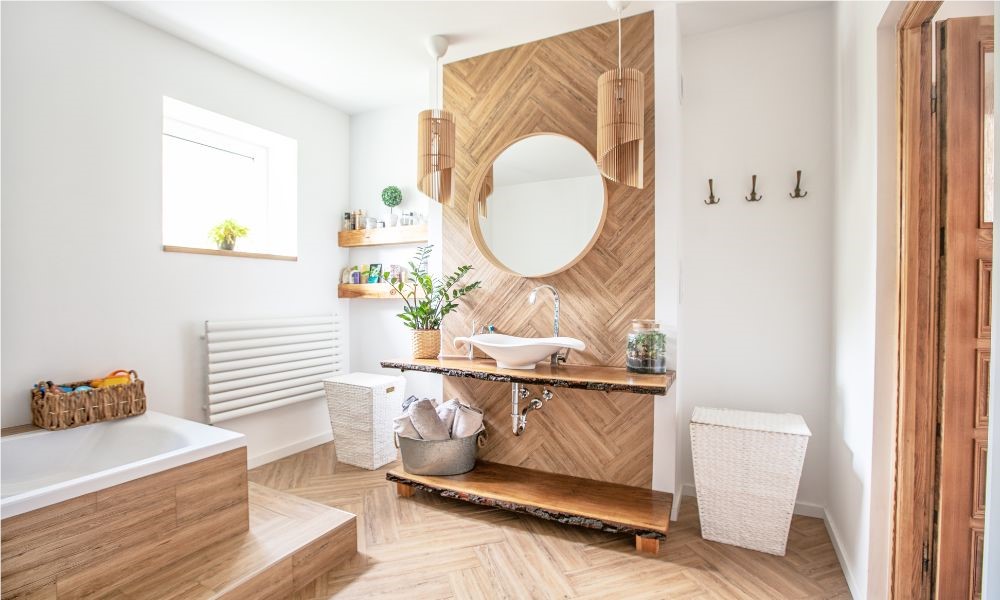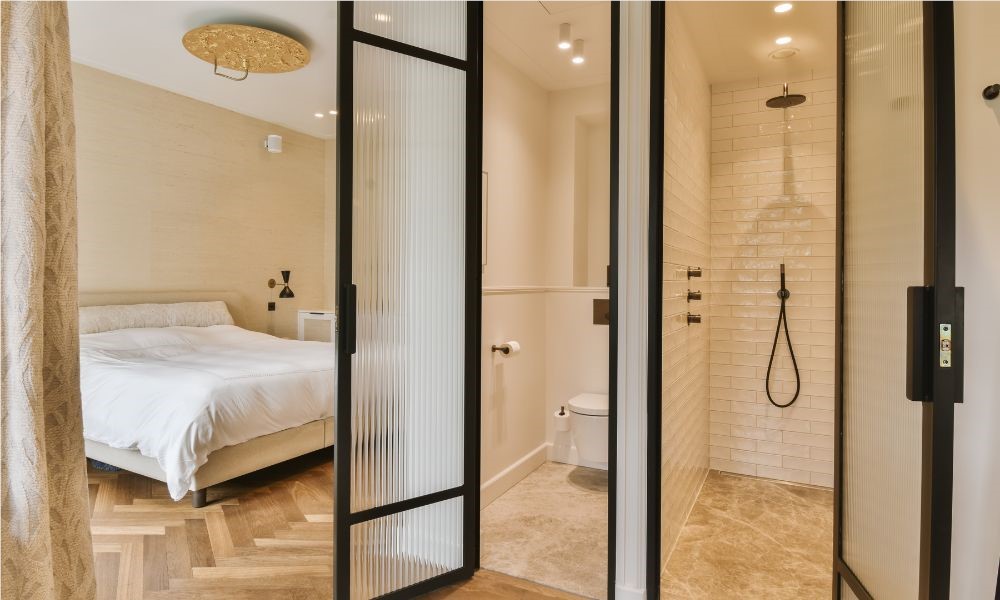
When you’ve decided it’s time for a bathroom renovation, the differences between installing a shower stall vs. a walk-in shower are key to your project’s success. Both options offer ways to improve your bathroom and enhance its character as a sanctuary of cleanliness and rejuvenation. But each choice also presents an array of nuanced differences that could significantly impact your daily routine and the broader functionality of your bathroom.
Defining a Shower Stall vs. a Walk-In Shower
Shower stalls are the familiar, traditional enclosures with doors or sliding panels and trays that funnel water into a defined drainage area. The entire unit is a contained, separate compartment within the bathroom space.
Walk-in showers, sometimes called wet rooms, have an open design that more seamlessly melds with the rest of the bathroom area. Wet rooms are typically without doors or partitions, while walk-in showers usually feature glass panels to contain the water to a designated showering section. The level floor design at the entry promotes wheelchair accessibility and an uncluttered visual look.
Humidity Control and Aesthetic Appeal
One of the starkest contrasts between shower stalls and walk-in showers is the impact they can have on the bathroom's humidity levels and overall atmosphere. Shower stalls, with their enclosed design, contain the steam and moisture more effectively. This keeps the shower area warm for users, but intensifies the contrast between warm and cool when you step out of the shower.
Walk-in showers, due to their more open nature, offer less control of steam and moisture, which may affect the entire bathroom's humidity and cause condensation on mirrors and vanity tops. Thus, proper ventilation becomes even more crucial for a wet room or walk-in shower arrangement.
Aesthetically, a walk-in shower or wet room’s open design can create an expansive, spa-like feel that many find particularly appealing. The continuous flooring also contributes to a sleek, modern appearance that can elevate the bathroom's overall design.
These open designs are especially appealing to home buyers who want luxuriousness. Upgrades include rain showerheads, handheld massaging showerheads, and fixtures that create waterfalls from the ceiling or shoot jets of water horizontally out of the walls. These add elements of opulence that prospective buyers find very alluring.
Spatial Considerations and Drainage Needs
Shower stalls usually require less space than walk-in showers or wet rooms due to their compact, contained design. This can be a significant factor in smaller bathrooms or floorplan scenarios where space optimization is necessary. Shower stalls also typically have a slight grade in the floor leading to the drain, which is necessary to prevent standing water and ensure successful drainage. With shower stalls, however, the grade comes from a shower pan atop the room’s actual floor.
The shower pan base in a shower stall creates a step-over threshold where the shower doors are. This is a much more economical way of directing water than in walk-in showers or wet rooms, which may require the rebuilding of the existing floor. Rebuilding may be necessary for them to achieve a slight grade toward a slot drain along their walls.
Walk-in showers almost always need a larger area to allow easier access and maintain their open design. This means a more generous area dedicated to the shower's footprint within the bathroom. Waterproofing and the graded floor in a walk-in shower add to installation expenses. Any failure to install these features correctly can result in large-scale damage to the entire bathroom floor and its walls.
Accessibility and Universal Design
The universality of design has become a prominent consideration in modern bathroom renovations, particularly when creating spaces that are accessible for people of all abilities. Walk-in showers are often preferable when mobility and accessibility are primary concerns, as they offer seamless entry points, allowing for roll-in wheelchair access.
Walk-in showers with grab bars and properly sloped floors not only enable independent showering for persons with disabilities but also ensure the space is safe and comfortable as homeowners age in place. Shower stalls, with their step-over thresholds, can include accessible features. But they may require additional modifications to floors and fixtures to achieve the same level of ease of use for those with limited mobility.
Installation and Construction Challenges
Installing a walk-in shower, particularly a custom one, can be more involved than putting in a shower stall. Since it requires a completely waterproofed and sloped floor and the potential removal of bathroom walls, a walk-in shower or wet room is often the pricier option.
Shower stalls, especially those that come as kits, are more straightforward to install, which can lead to cost savings. They typically have a quicker installation timeline and easier cleanup since much of the work is within the unit during construction.
Financial Considerations and Long-Term Value
The remodeling project’s budget may be the deciding factor between a shower stall and a walk-in design. Generally speaking, shower stalls are more cost-effective upfront due to their simpler construction and the ability to install them as standard fixtures. Many come as prefabricated kits, lowering both material and labor costs.
Walk-in showers can add significant value to the home, especially for those who value a modern, open floor plan style. Their long-term benefits for accessibility and aesthetics may warrant the initially higher investment for some homeowners looking to enhance their quality of living and potentially attract a wider pool of future buyers.
Final Thoughts and Considerations
Ultimately, the choice between a shower stall and walk-in shower is deeply personal. Decide based on your specific needs, space constraints, aesthetic preferences, and budget. Whether you lean toward the practicality of a traditional shower stall or the luxurious open concept of a walk-in shower, you should weigh these considerations thoughtfully. For some, it may even make sense to seek a middle ground, such as a low-threshold shower stall with a clear curtain, to combine the benefits of both designs.
Early in your project planning process, consult remodeling professionals to explore the full spectrum of options, make mockup designs, and visit showrooms to experience the fixtures in person. This is especially important if your need is for an accessible shower. Some contractors are expert handicap bathroom installers, while others may have little experience renovating for accessibility. Your final choice will impact the functionality of your bathroom and enhance your daily routine and quality of life.

Subscribe to Reece Builders's Blog






Comments